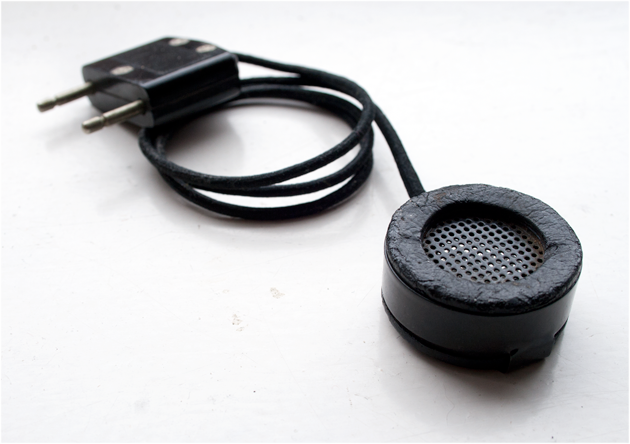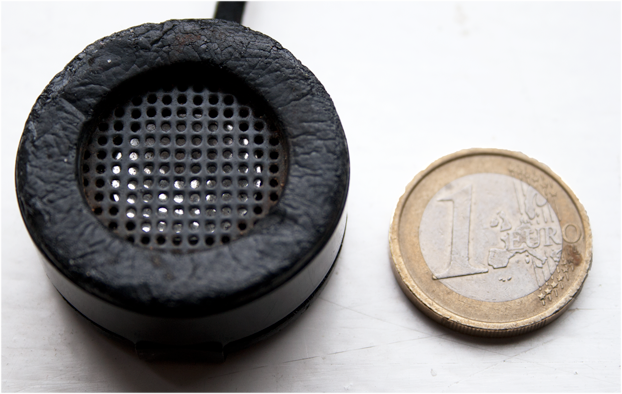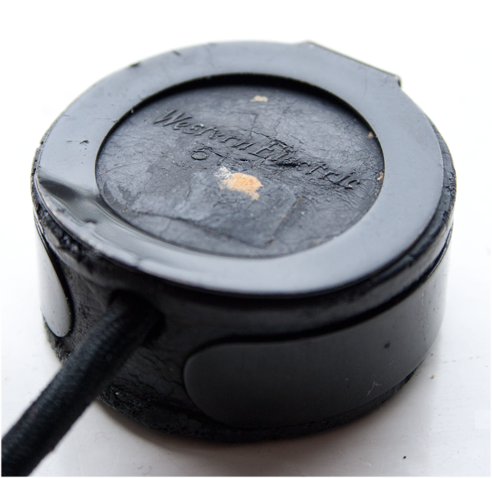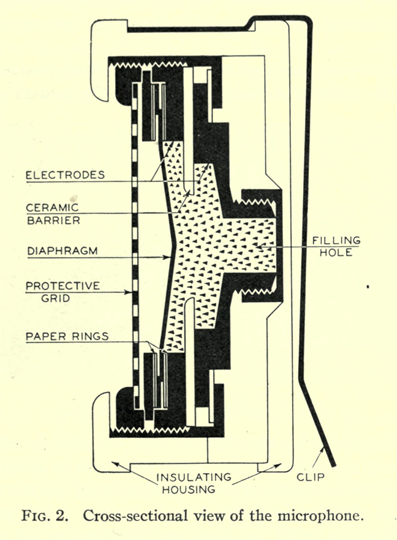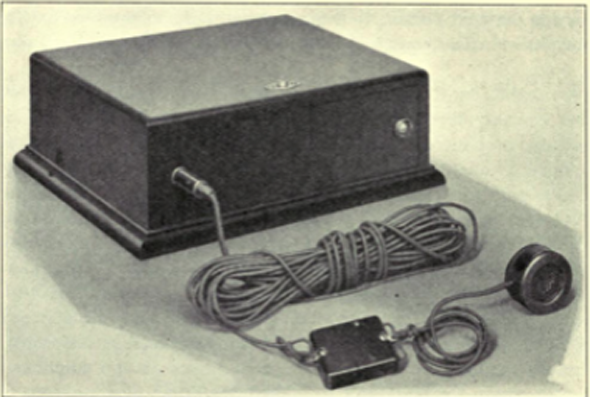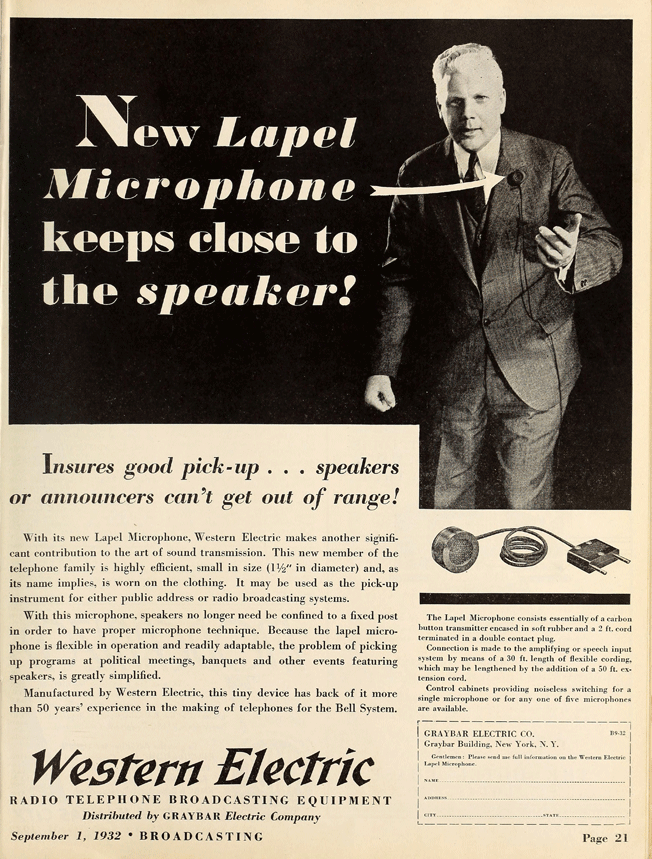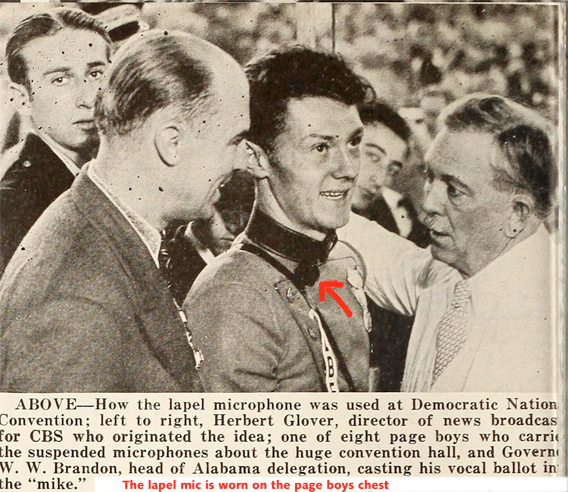|
These days we are all familiair with wireless microphones, they allow artists to sing and dance at the same time, and allow speakers to move freely on a stage. In the early days of electrical audio, microphones were mounted on a stand and nailed users to a fixed position.
Even in the thirties such a limitation was unacceptable and so, Western Electric, the leading microphone company of the time, was working on solutions. In 1932, the very first lapel microphone was presented, a tiny carbon, the size of a 25 cents piece: about an inch and a half in diameter (3,5cm). The type number 619 can be seen on the back, but seems not to have been used by WE.
Because the new microphone could be worn on clothing, it offered freedom of movement for a speaker. It was an adaption of the microphone that had been developed by Bell Labs for telephone operators.
The lapel microphone housing was covered in soft rubber, to reduce the noise of rubbing against the speakers clothing. An integrated clip allowed attaching it to a lapel or a breast pocket.
It has a thin aluminium diaphragm and, unlike the usual button carbon microphones, where the diaphragm forms one of the electrodes, the diaphragm of the lapel microphone was insulated from the carbon granules. Two circular electrodes made the electrical connection, a system similar to that used in the Reisz carbon microphones.
The 2 feet mic cord (about 0.6m) was plugged into a counter plug, which contained a condenser of a few thousands of a microfarad, bridged across the conductors, preventing the cohering of the carbon granules, when the plug was disconnected while in use. The connector could be worn a pocket of a jacket, from there a 30 feet (10m) long flexible cable connected it to a control cabinet, that held a coupling transformer that attenuated the lower frequencies, to achieve a clearer sound. The output of the mike, fastened to the lapel of a coat, was about the same as that of a double button carbon spoken to from about a distance of 3 feet (1m).
Two types of control cabinets were available, for a single microphone, or to connect up to five microphones. Only a single microphone could be used at the same time. Operating the system was very simple, it did not require a technician.
At the democratic convention of 1932, in the US, the lapel microphones were introduced; eight of them were used, carried across the vast convention floor by eight uniformed page boys, they offered the opportunity for delegates to cast their vocal ballot in the lapel mike, to the PA, and to radio listeners at home.
After this succesful introduction, Western Electric combined the lapel microphone with a 'portable' 3 Watt PA system that fitted in a suitcase, it weighed 70 pounds (32 kilos). It was offered to political candidates and other public speakers. The volume could be controlled with a potentiometer connected to the control unit by a 30-foot cord.
Essentially the idea to remove the microphone from a stand and hand it over to a speaker was the first step that lead to wireless microphones we so much enjoy today.
Many more types feature in my book Witnesses of Words. More information about that can be found at www.witnessesofwords.com
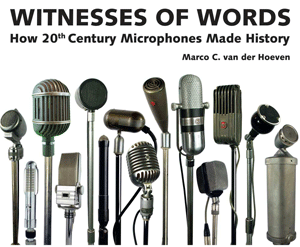
|
|
|
|
|
|
Above: the Western Electric lapel mic, size compared to Euro & back showing the metal clip
Below: sound, complete WE lapel system, ad from 1932, and page boy with lapel mic at the Democratic Convention of 1932 |
|
|
|
|
|
|


 Video's
Video's Contact
Contact


